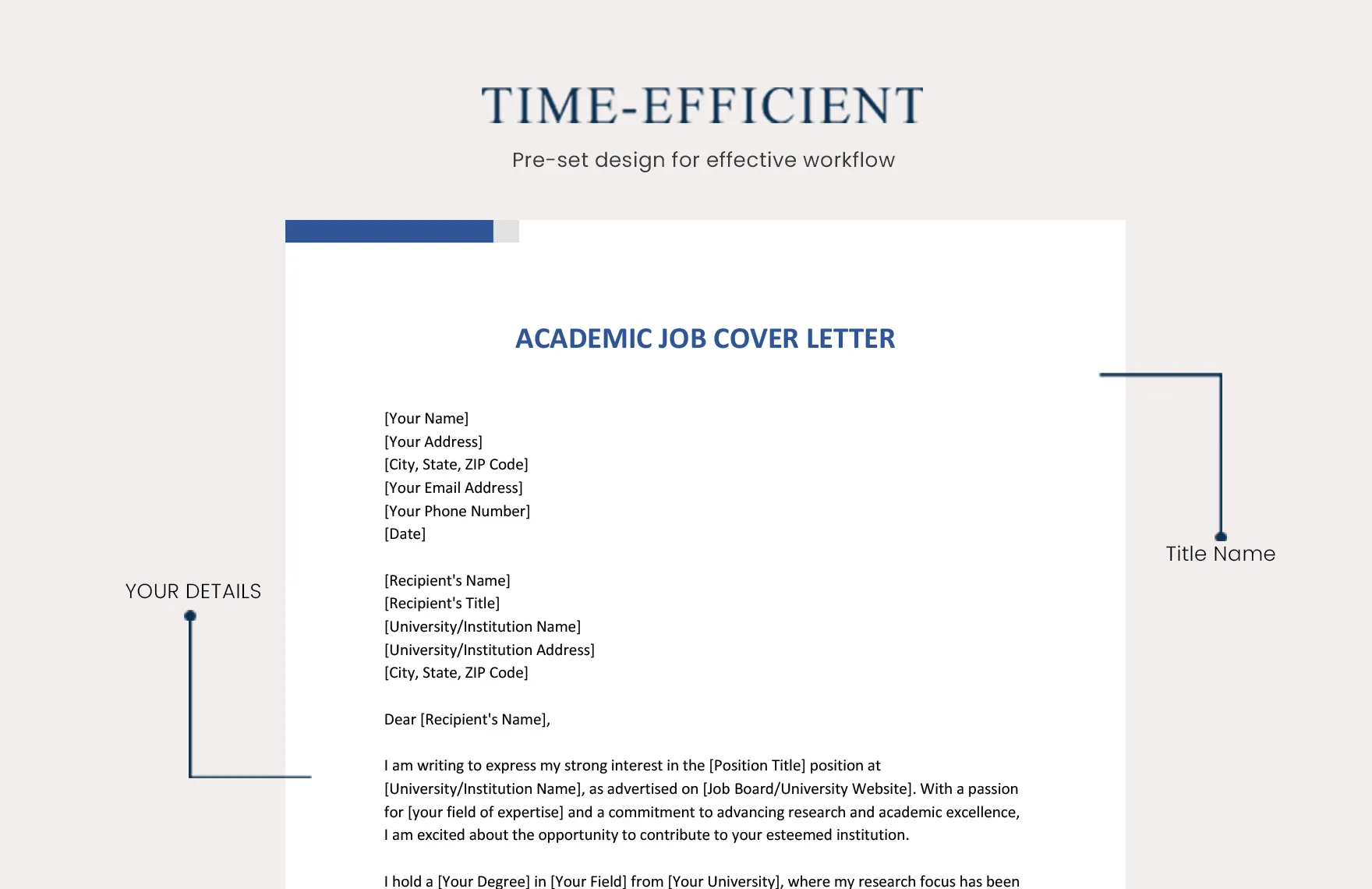Crafting Your Academic Cover Letter
An academic cover letter is more than just a formality it’s your first impression on the search committee. It’s your chance to showcase your qualifications, passion, and suitability for the position. Unlike cover letters for other professions, academic cover letters require a specific structure and focus, emphasizing research, teaching, and service. A well-crafted letter can significantly increase your chances of getting an interview and ultimately, landing your dream job. This guide will help you navigate the nuances of academic cover letter writing, ensuring your application stands out.
Understanding the Purpose of the Cover Letter
The primary purpose of your academic cover letter is to introduce yourself and persuade the hiring committee that you are a strong candidate. It should complement your curriculum vitae (CV), providing context and depth to your accomplishments. The cover letter allows you to explain your research interests, teaching philosophy, and how your skills align with the department’s needs. Consider it a narrative that brings your CV to life, highlighting your most relevant achievements and demonstrating your understanding of the position and the institution. The goal is to make the committee eager to learn more about you.
Highlighting Your Research Experience
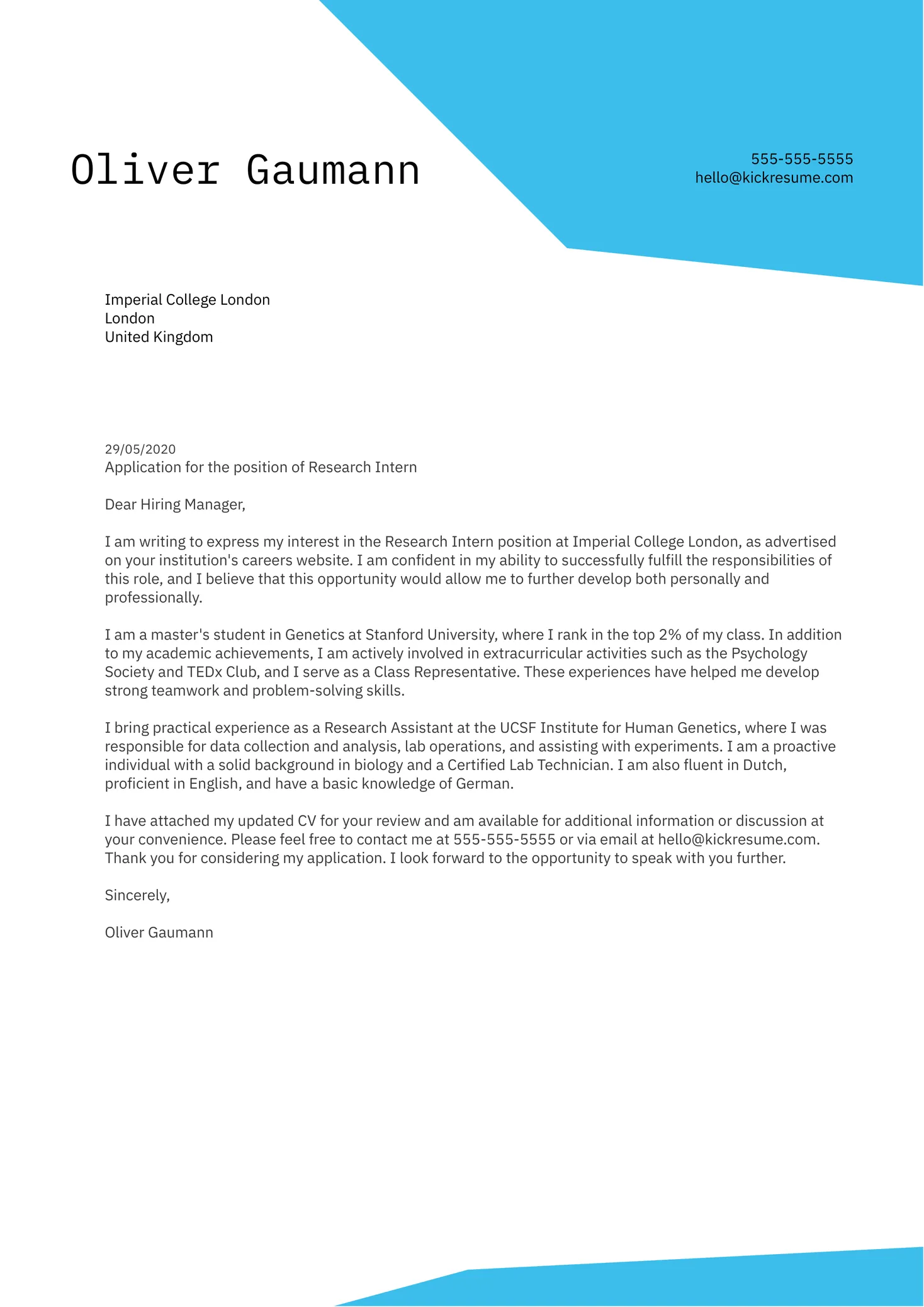
Research is a cornerstone of academic life, and your cover letter should clearly articulate your research experience. Detail your research interests, methodologies, and the significance of your work. Mention your publications, presentations, and any grants or fellowships you’ve received. Explain the impact of your research and how it contributes to your field. Be specific about your contributions to collaborative projects, and highlight any skills or expertise you’ve gained. Showcase your ability to secure funding and manage research projects; these demonstrate your commitment to advancing knowledge and your capacity to contribute to the institution’s research goals. This section should be very detailed on the topics of your research.
Showcasing Teaching Abilities
Teaching experience is crucial for academic positions, and your cover letter should emphasize your teaching abilities and philosophy. Describe the courses you have taught, the teaching methods you employ, and your approach to student engagement. Mention any teaching awards or positive student evaluations you’ve received. Clearly articulate your teaching philosophy, including your goals for student learning and your commitment to fostering a positive learning environment. If you have experience developing new courses or curricula, be sure to highlight that as well. Demonstrate your ability to communicate complex concepts effectively and inspire students.
Demonstrating Fit with the Institution
A crucial aspect of a successful cover letter is demonstrating how your skills and interests align with the institution’s mission, values, and the specific requirements of the position. Research the institution thoroughly, including its research priorities, teaching focus, and departmental culture. Explain why you are interested in working at that particular institution and how your work complements the existing faculty and programs. Show a clear understanding of the department’s needs and how you can contribute to its success. Customize your letter to reflect this understanding and demonstrate your genuine enthusiasm for the opportunity.
Structuring Your Academic Cover Letter
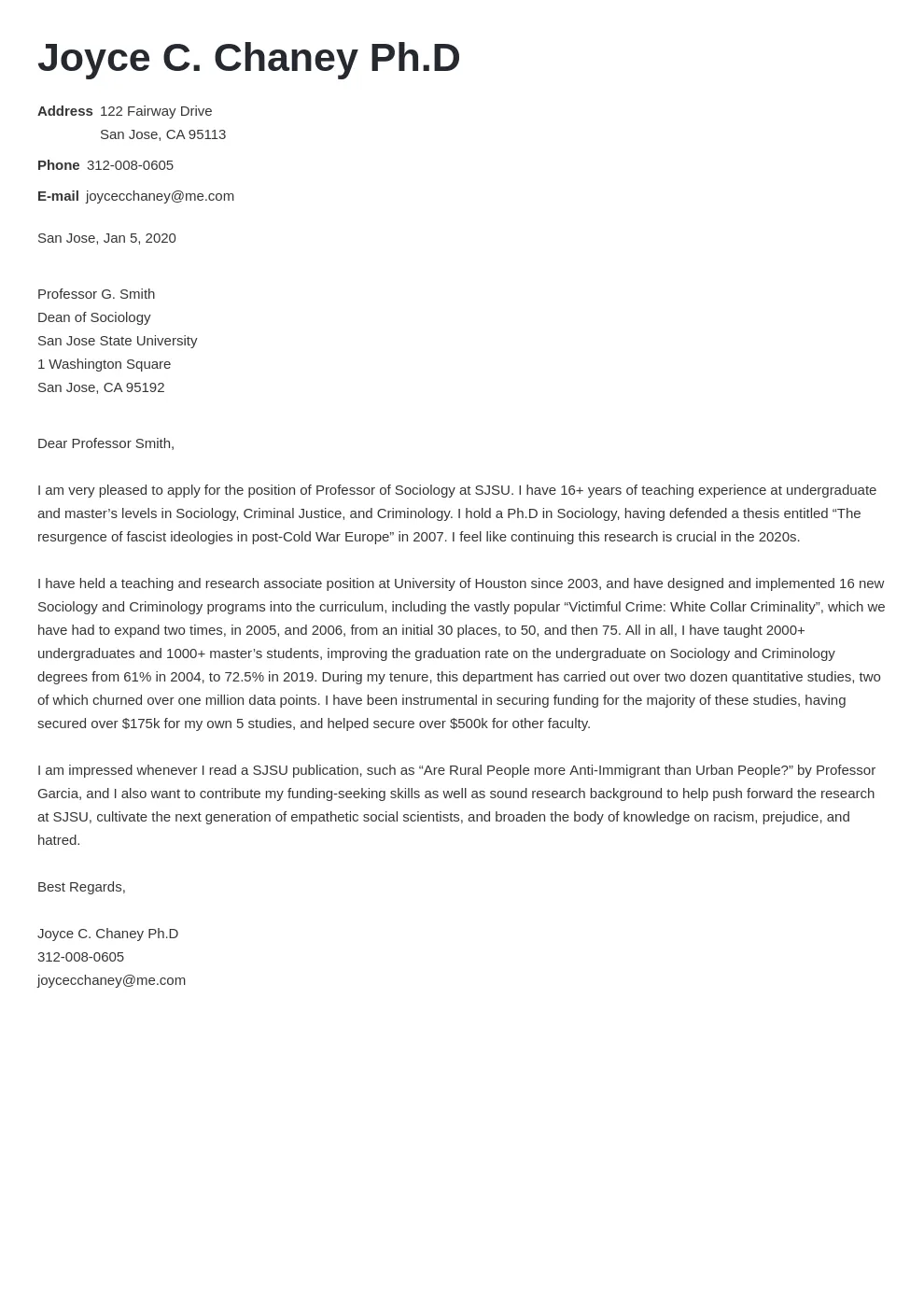
A well-structured cover letter is essential for conveying your qualifications effectively. It should be concise, well-organized, and easy to read. A typical academic cover letter usually consists of a header, salutation, an introductory paragraph, body paragraphs that highlight your qualifications, and a concluding paragraph. Each section should serve a specific purpose, ensuring your key achievements and suitability for the position are clearly communicated. Use clear headings and formatting to make your letter visually appealing and easy for the reader to navigate.
Header and Salutation
Start with a professional header that includes your contact information. Address the letter to the search committee chair or the appropriate person by name if possible. If you cannot find a name, use a general salutation such as “Dear Search Committee.” Ensure the salutation is formal and appropriate for the academic setting. Proper formatting in this opening can help show that you’ve done your research and pay attention to detail.
First Paragraph: Hooking the Reader
The introductory paragraph should immediately capture the reader’s attention. State the position you are applying for and where you found the job posting. Briefly summarize your key qualifications and express your enthusiasm for the opportunity. Clearly state your most relevant experiences and why you are the ideal candidate. Tailor this introduction to the specific requirements listed in the job description, ensuring you address the most important criteria up front.
Body Paragraphs: Detailing Achievements
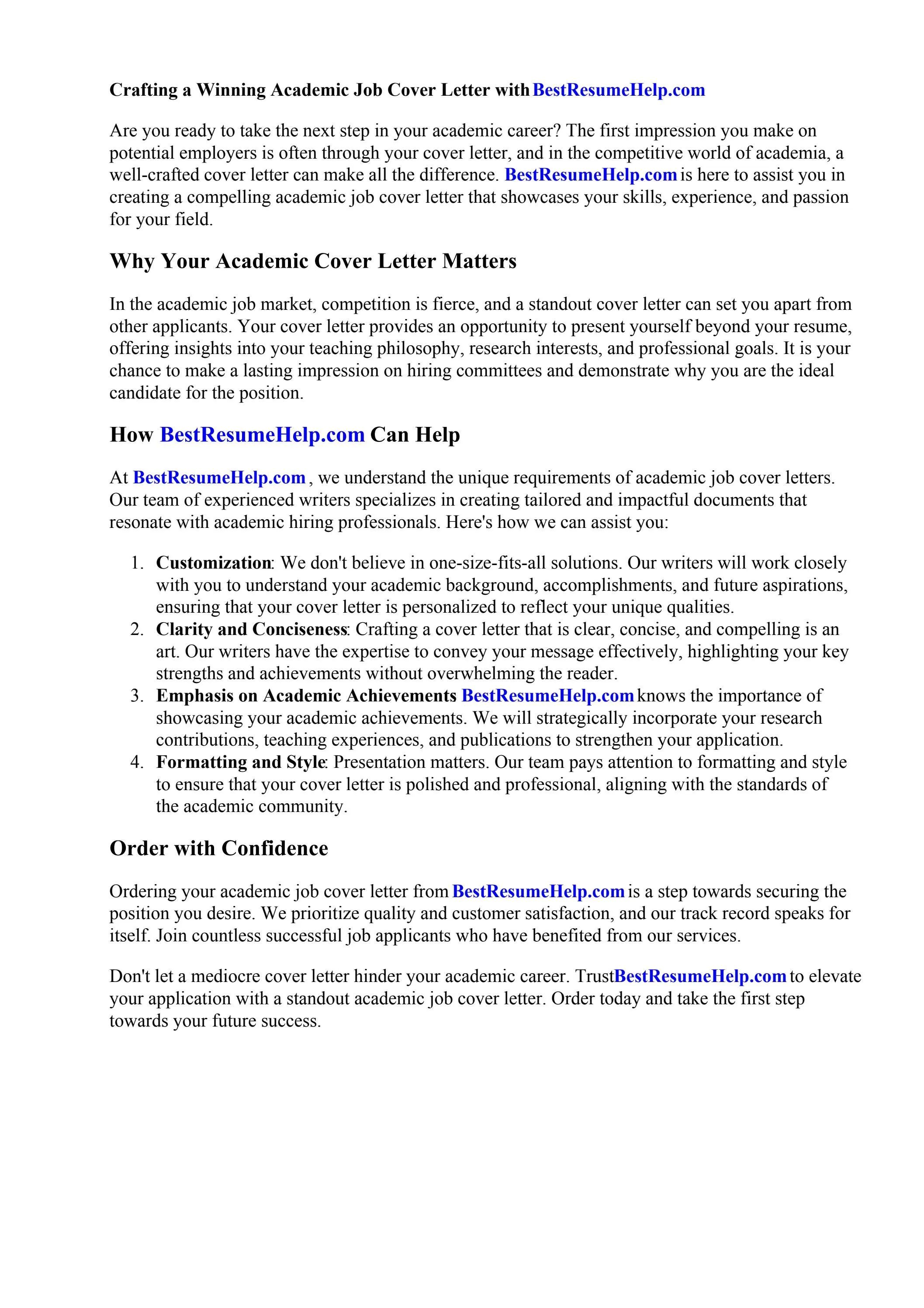
The body paragraphs are where you provide details about your research, teaching, and service experience. Each paragraph should focus on a specific aspect of your qualifications. Provide concrete examples of your achievements, using the STAR method (Situation, Task, Action, Result) to illustrate your contributions. Quantify your accomplishments whenever possible, using metrics to demonstrate your impact. Use clear, concise language and avoid jargon that the search committee may not understand. Ensure that each paragraph supports your overall narrative of how you would be a good fit.
Concluding Your Cover Letter
The concluding paragraph should summarize your qualifications and reiterate your interest in the position. Thank the search committee for their time and consideration. Express your eagerness for an interview and provide your contact information again. Reiterate your confidence in your ability to contribute to the department and the institution. End with a professional closing, such as “Sincerely” or “Respectfully,” followed by your name.
Key Elements to Include
Certain elements are crucial for an academic cover letter. Highlighting these demonstrates your preparedness for the position. Providing this information is an integral part of making a good impression on the search committee.
Research Experience
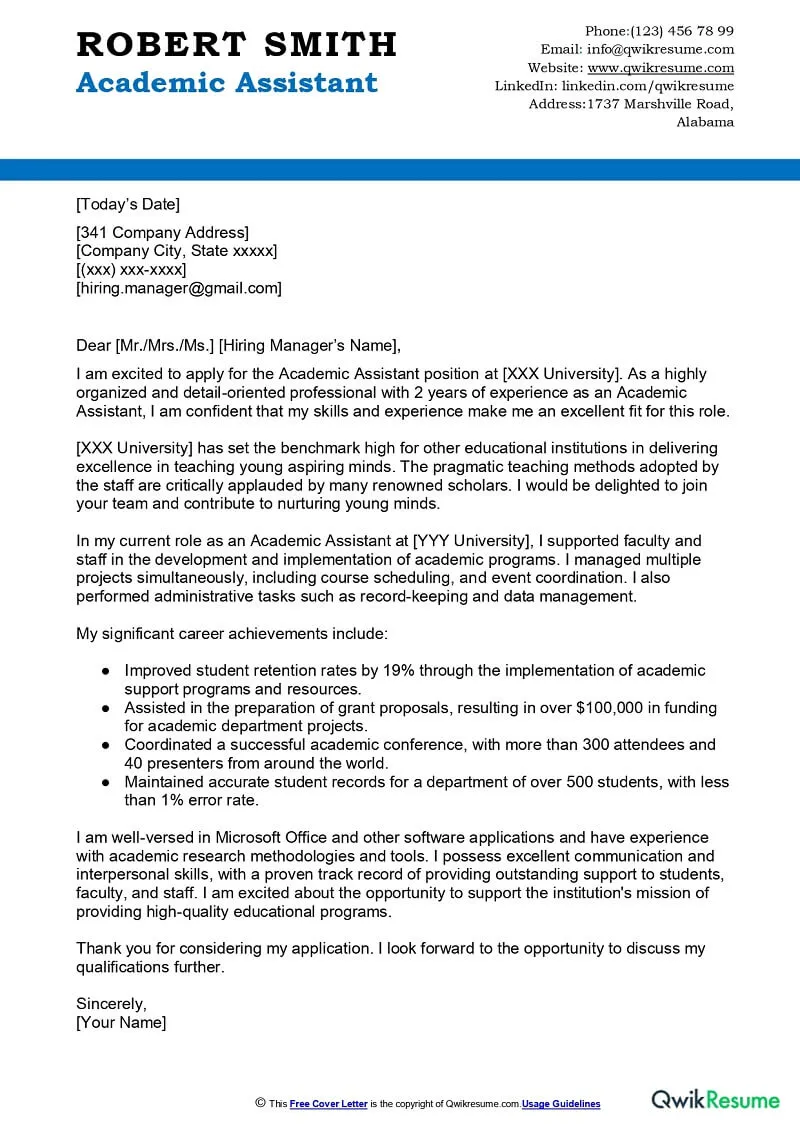
Provide a concise overview of your research experience. Specify your research areas, methodologies, and major findings. List your publications, presentations, and any grants or fellowships you have received. Explain how your research aligns with the department’s focus and how it complements the existing faculty’s work. This is a section that should be very in-depth and detailed.
Teaching Experience
Describe your teaching experience, including the courses you have taught and your teaching philosophy. Outline your teaching methods, your approach to student engagement, and how you create a positive learning environment. Mention any teaching awards or positive student evaluations. Demonstrate your ability to teach a variety of courses and your commitment to student success.
Publications and Presentations
Include a list of your publications in peer-reviewed journals and conference presentations. Highlight any publications or presentations that are most relevant to the position. Explain the significance of your work and how it contributes to the field. Mention any awards or recognitions you have received for your publications or presentations. This demonstrates your ability to disseminate research findings and contribute to the scholarly community.
Skills and Expertise
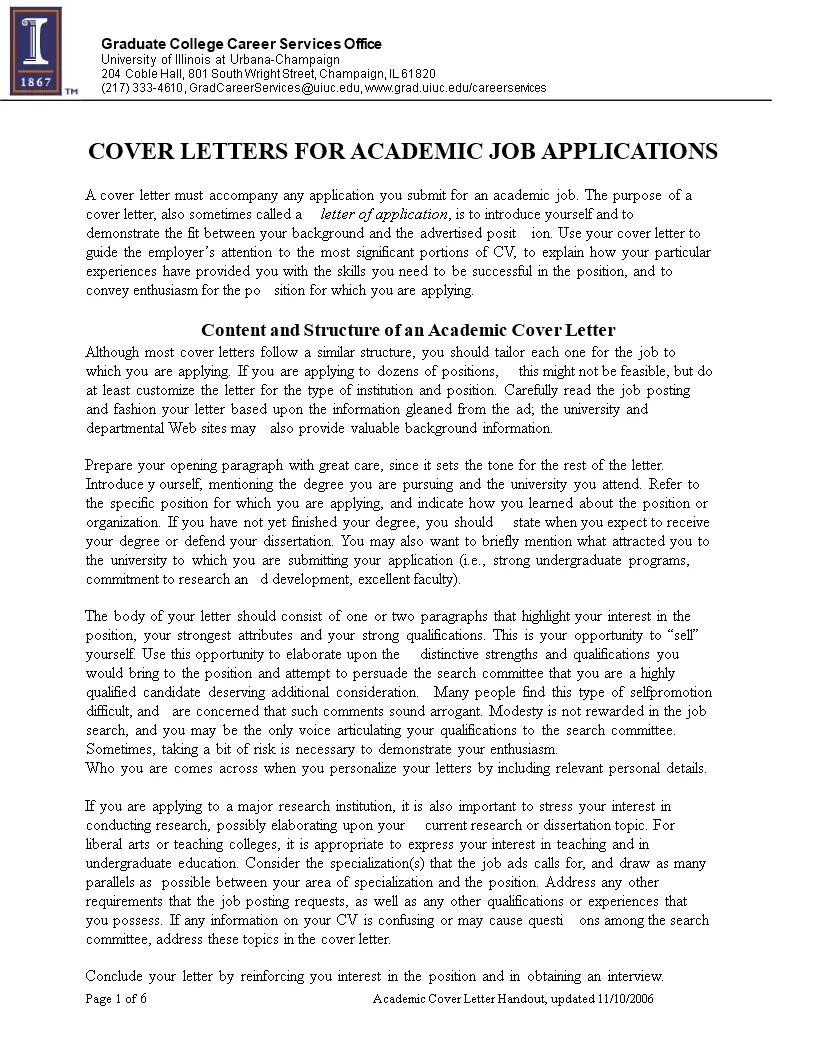
Highlight any skills and expertise relevant to the position, such as specific software proficiency, statistical analysis skills, or laboratory techniques. Also, include other expertise such as experience in curriculum development, grant writing, and project management. This helps to illustrate that you can bring more to the table than just your academic accomplishments.
Tailoring Your Cover Letter
A generic cover letter will not impress a search committee. Tailoring your letter to each specific position is essential for demonstrating your genuine interest and suitability. By demonstrating that you’ve specifically reviewed the job posting and requirements, it can make a great impression. Be sure to also check the school’s website, to learn what the institution stands for.
Research the Institution
Thoroughly research the institution and the department you are applying to. Understand their mission, values, research priorities, and teaching focus. Identify faculty members whose work aligns with yours and mention them by name in your letter. Show that you are genuinely interested in the institution and understand its goals. This preparation demonstrates that you are serious and not just sending out generic applications.
Address the Specific Requirements
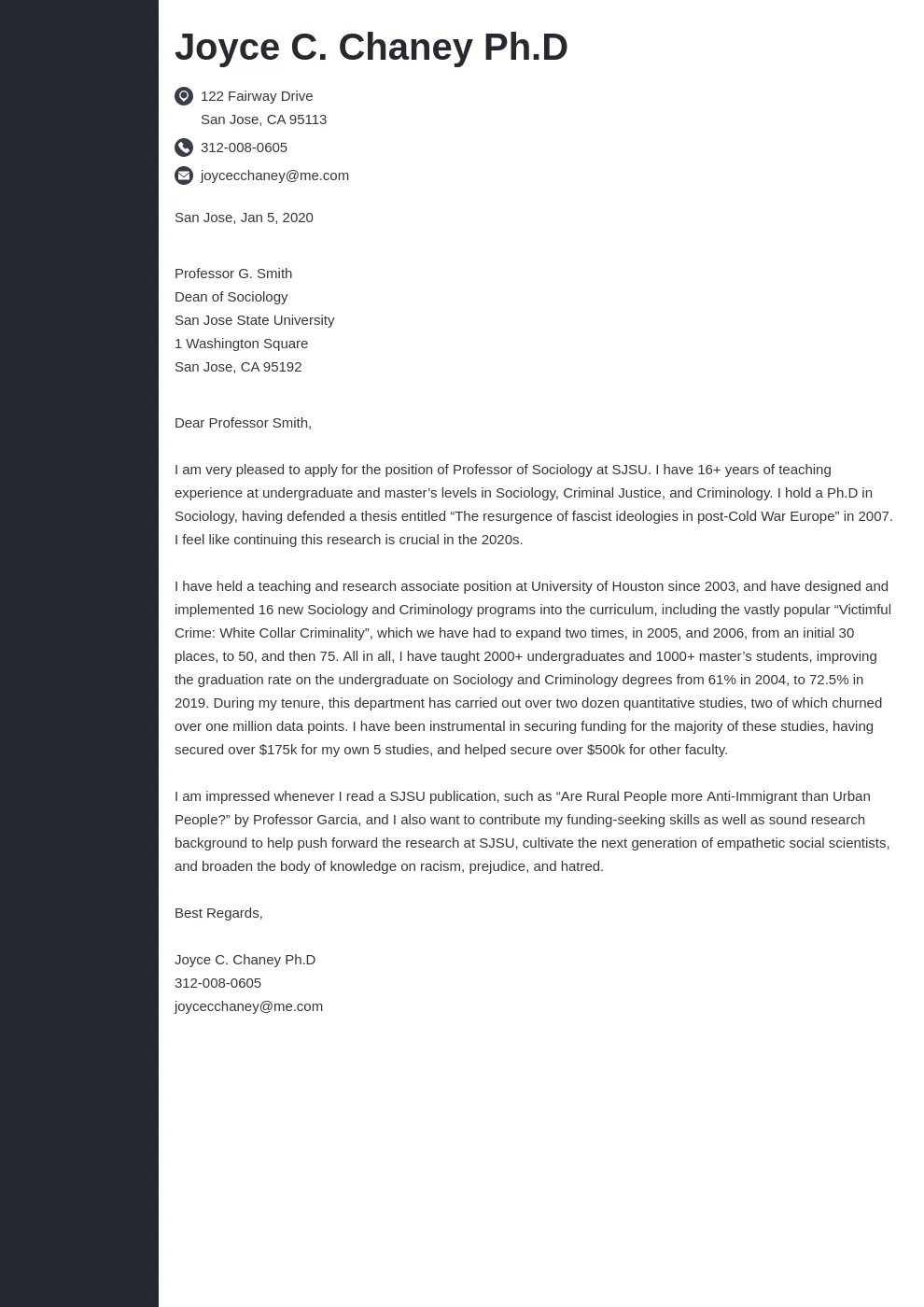
Carefully review the job description and address each of the required qualifications and skills. Use the same language and keywords that are used in the job posting. Provide specific examples of how your experience and skills meet the requirements. This demonstrates that you understand what the employer is looking for and that you are a good fit for the position.
Use Keywords
Use relevant keywords from the job description throughout your cover letter. This helps the search committee quickly identify your qualifications. Incorporate keywords naturally, avoiding keyword stuffing. Focus on the essential skills and experiences, ensuring that they are well-integrated into your narrative.
Proofreading and Editing
Before submitting your cover letter, carefully proofread and edit it for any errors in grammar, spelling, and punctuation. Have a colleague or mentor review it as well. A polished and error-free cover letter demonstrates your attention to detail and professionalism. Make sure the format is consistent and visually appealing. An error-free document helps ensure you will make a good impression.
